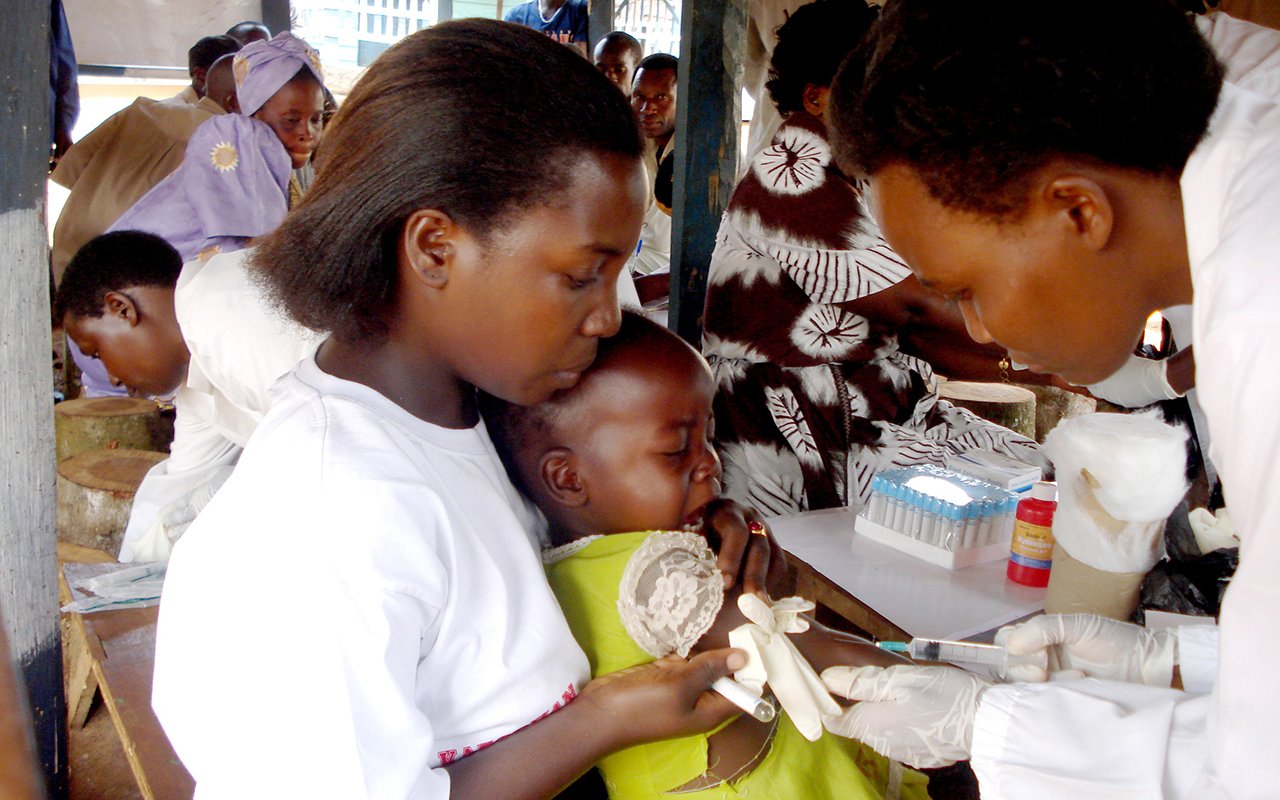
Research shows that female mosquitoes are the only ones which bite humans because human blood contains the protein they need to produce their eggs. PHOTO | REUTERS
Researchers from Makerere University have said 19 per cent of anti-malarial drugs sampled from randomly selected pharmacies and drug shops in the country failed quality tests, signalling increased death risks among patients.
Seventy-four different batches of antimalarial drugs Artemether-lumefantrine (AL) samples were obtained from outlets in high malaria transmission areas of Apac and Tororo and low malaria transmission areas of Mbarara and Kabale, according to the report.
Ms Winnie Nambatya, a lecturer of clinical pharmacy at the university, did this study with six other researchers, including Dr Moses Ocan, who is also a lecturer at the Department of Pharmacology and Therapeutics.
Findings
The quality test, researchers describe, was done using Liquid chromatography-mass spectrometry (LC-MS) following the international and United States Pharmacopoeia (USP) method. This modern technology allows for separation, identification and quantification of both known and unknown components of a sample.
The samples were considered substandard if the Active Pharmaceutical Ingredient (API) content was below 90 percent or above 110 percent range of the label claim, according to the report. The findings were presented before scientists, and officials from the National Drug Authority (NDA) and the Health Ministry on Friday in Kampala.
“Overall, 18.9 percent of the artemether-lumefantrine samples were of substandard quality. A total of 10 samples (13.5 percent) failed artemether content assay (test) while four samples (5.4 percent, 4/74) had substandard lumefantrine content,” Ms Nambatya revealed.
Artemether and lumefantrine are the different active ingredients in common malaria drugs used in the country.
Although some of the samples that failed had some level of active ingredients, Dr Ocan, on the other hand, revealed that one batch had zero content of the active ingredients.
“What we found in these assays for the artemether content is that majority of the samples had less than 20 milligrams (recommended quantity of the active ingredient), with one of the samples having zero content of artemether and lumefantrine, so people are taking starch for treatment of malaria,” Dr Ocan said.
“We are assessing drivers of drug resistance and this could be one of the causes because parasites are being exposed to sub-optimal strength of the medication. The medicine has to be absorbed, but what are you absorbing? Cassava. But this was only in one batch, not in all batches and the information was communicated to the NDA,” he added.
Apac, Tororo worst hit
Malaria, according to statistics from the World Health Organisation (WHO) and the government, still kills around 10,000 Ugandans annually and causes an estimated economic loss of Shs2.4 trillion due to the cost of treatment and work time lost due to sickness or caring for a sick relative.
Dr Jimmy Opigo, the head of the Malaria Control Programme at the Health ministry, said their figures show that “[the] government alone spends close to $150m (Shs572 billion) in treatment of malaria every year.” He said this excludes what families spend.
“We know that to treat simple malaria costs the household about Shs50,000 and to treat severe malaria where you are hospitalised, costs around Shs150,000 to Shs200,000, that excludes the ones who go on to require dialysis because of kidney injury induced by the infection,” he said.
According to the new report, the majority of the substandard drugs were found in Apac and Tororo. “One sample from a high malaria transmission setting failed both Artemether and Lumefantrine assay tests. Of the samples that failed artemether assay test, majority, 90 percent had low (90 percent) artemether content,” the report reads.
Dr Ocan explained that the substandard products could be due to poor adherence to established good manufacturing practices (GMP) and not necessarily a planned malicious action. According to the researchers, the majority of the drugs sampled were imported from India.
NDA questioned
Although some scientists, who were in the report dissemination meeting, questioned the effectiveness of drug regulation and appealed for legal action against the manufacturers of the substandard drugs, NDA officials asked them to go slow.
Ms Sandra Tuhairwe, a regulatory pharmacist at NDA who was at the meeting, questioned the method used by scientists, but Dr Ocan said they used Liquid chromatography-mass spectrometry, a method he said was a superior technology to the one NDA wants them to use.
Ms Tuhairwe said: “You can’t start arresting people or changing policies unless the methods you used are okay so that the results are regarded by the regulator and WHO.”
She added: “If you come up with a new method, then you have to compare it with what is already established in the Pharmacopoeia. For example WHO has methods that it uses, so ideally, there is a need to compare your methods with one that WHO has, your method has to be superior or equivalent to what WHO has.”
Ms Tuhairwe didn’t indicate the alternative findings by NDA as the researchers said they communicated to the Authority immediately after the findings were made.
However, Dr Opigo, who was also at the same meeting, appealed to the NDA to close the gaps in drug regulation to ensure patients are accessing quality drugs. He applauded the scientists for increased interest in the malaria field, saying they need many studies to address the threat of malaria drug resistance in the country.
Dr Opigo revealed that during the malaria upsurge last year, the malaria deaths in the country doubled.
“When we had a big epidemic it was postulated that, among others, it could be driven by resistance [of parasites to malaria drugs]. By then we had not established properly. It was also postulated that it could be driven by low-quality medicines, degenerated quality—[medicines] can get degenerated in the market because of how they are handled,” he said.
‘We can do better’
Ms Sheila Ampaire, the NDA principal regulatory officer for research, acknowledged at the report dissemination meeting that sometimes they find challenges in regulation. She said they are increasing efforts to ensure drug quality.
“Regarding what we do concerning antimalarials, we already do mandatory testing at the point of import –once the drugs have come in. whereas they [the drugs] are released before the results are out, when we find that there is an issue, regulatory action is taken. And for artesunate [an injectable antimalarial], we do not release [the drugs] before the results have been received,” she said.
“But there are some porous borders, it happens that we can have some substandard and falsified medicines on the market and that is where we can find an instance of a drug that does not have an active ingredient. We are going to work together with the malaria control programme and all the stakeholders to make sure we improve how we are doing things,” she added.





